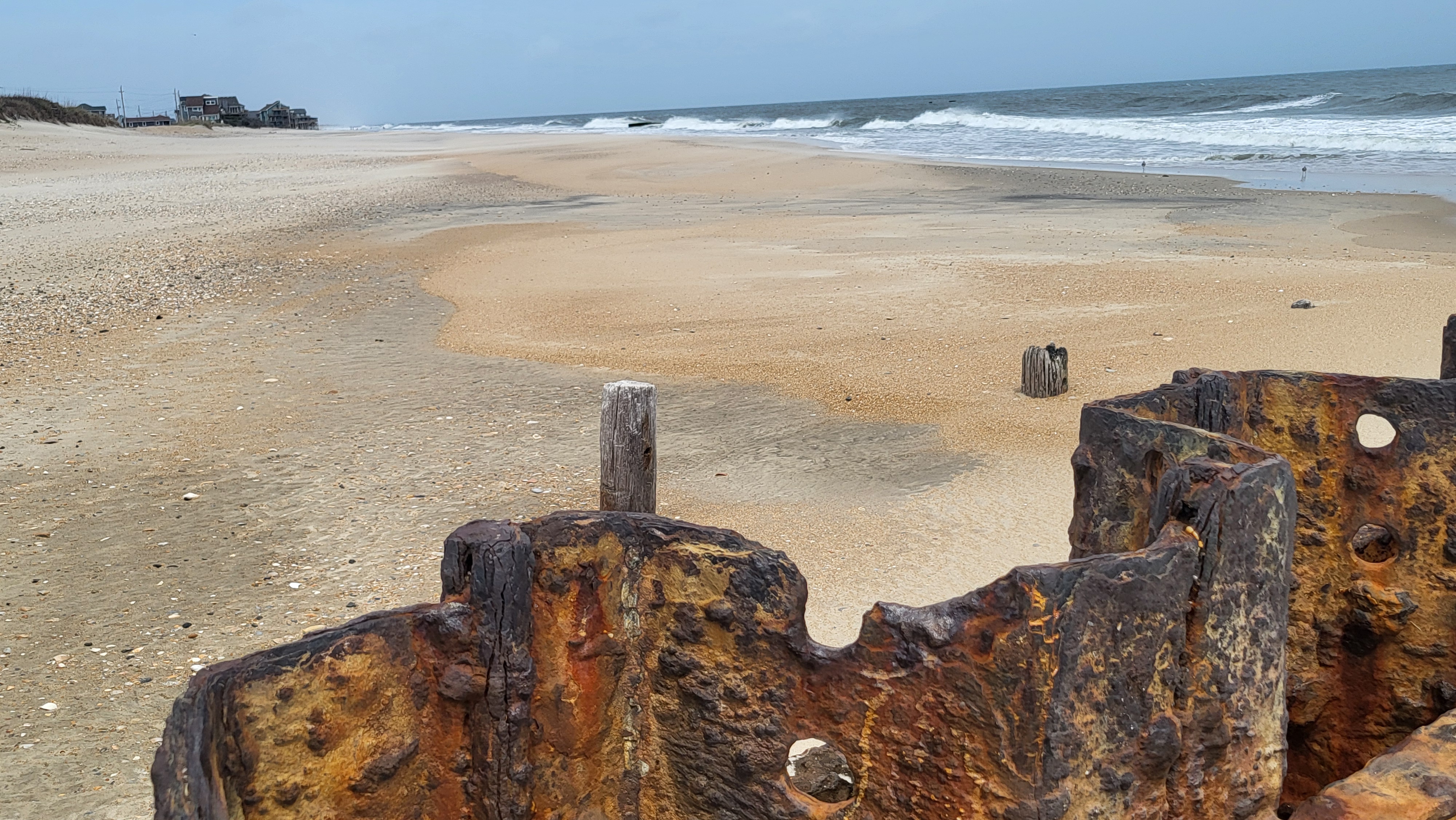Kinnakeet Home: Avon Harbor
When my grandfather, Ignatious “I.G.” Scarborough, was no longer able to drive, I liked to pick him up and take him wherever he needed to go. Every time he got in my car, he would tell me to go round by the harbor so he could see what was going on. The harbor was the hub of the village. I assumed he would live forever but he passed away at the age of 96. I wonder what he would think if he saw the harbor now.
What is now Avon Harbor was once a swamp with a creek in the middle that ran from the Pamlico Sound up through the village. The mouth of the creek was dug out in 1946 to form the harbor and the surrounding marshy area was filled.
Before the harbor was dug, the sound off of Avon had fish houses on stilts in water that was deep enough for fish boats and freight boats to load and unload seafood or cargo. The stilt houses were set out in a channel a short distance offshore. Watson Gray and Harris Miller ran these stilt houses. Once ice became available in the 1930s, boats would also pick up iced fish to be delivered to Elizabeth City. Watson Gray’s son, C. C. “Clemmie” Gray, owned the ice house.
I interviewed Clemmie Gray’s son, George, in 1994. He told me that his family had been in the commercial fishing business for generations. He recalled his father’s and other local men’s efforts to get the government to dredge the harbor.
The attorney general of North Carolina at that time was Harry McMullen. McMullen owned a vacation home on the shore side in Avon, and as a result, many of his influential friends visited. The local store, owned by Gibb Gray, was a gathering place for both locals and visitors. Herbert Bonner, a congressman, and Lindsey Warren, comptroller general, often visited the store and were told of the need for a harbor to be dredged. Bonner and Warren were convinced of the need and followed through in getting the project approved by Congress. However, World War II broke out and the work was delayed.
The harbor was completed November 15, 1946. The U.S. Army Corps of Engineers dredged right up the middle of what was called Peter’s Ditch. The fish house was moved to the harbor and the fishermen finally had a sheltered dock.
George Gray had learned the fish business at his father’s heels as a boy. Gray said in the interview, “I learned to work right along with him, he didn’t have to tell me nothing. I just watched, [and] after a while I knew more than he did.” The fish were bought from the fishermen and sold to Globe Fishing Company in Elizabeth City. The company had diesel boats that would go to Rodanthe. The Grays would load their own boat with ice and boxes of fish and meet them. Later, they had two trucks, which made the trip quicker but posed the difficulty of driving the heavily laden trucks through unpaved roads. The trucks would get stuck in the sand and would sometimes break an axle.
Gray remembered the days when the sound was full of fish. “We’d haul boatload after boatload every day. The most fish we got in them days was speckled trout and bluefish. There was no such thing as a crab market. People never started crabbing here til 1954. They just had set nets and long haul nets.”
In later years, other fish house owners included Sumner Scarborough and Fields Meekins. Sumner Scarborough’s fish house began operation in the 1970s. Edward Scarborough ran freight out of Avon Harbor.
Fields Meekins’ property changed hands and was eventually sold to Tilman Gray and Mike Hooper. They built a fish house around 1990. After a few years, Hooper sold out to Tilman. Around 2008 Tilman bought the fish house originally owned by Sumner Scarborough. He tore down the old building and constructed a new fish house.
At one time, there was also a ferry dock at the harbor. This was operated by the state after the Ash Wednesday Storm of 1962. The storm cut an inlet between Avon and Buxton, isolating the southern part of the island. Ferry service was established and ran until the inlet was filled back in.
The commercial fishing industry has gone through great changes. Sloops and skipjacks gave way to motorboats around 1930. The tradition of each generation wrestling its living from the sound has been under pressure from many factors. At this time, there are no fish houses in active operation at Avon Harbor.
The heritage of Avon Harbor belongs to the men and their families who are responsible for it being there. The destiny of the harbor and its place in village life seems to be cut off. But this village has survived and recovered from many adversities and so I look forward to the day when the harbor comes to life once again.
































